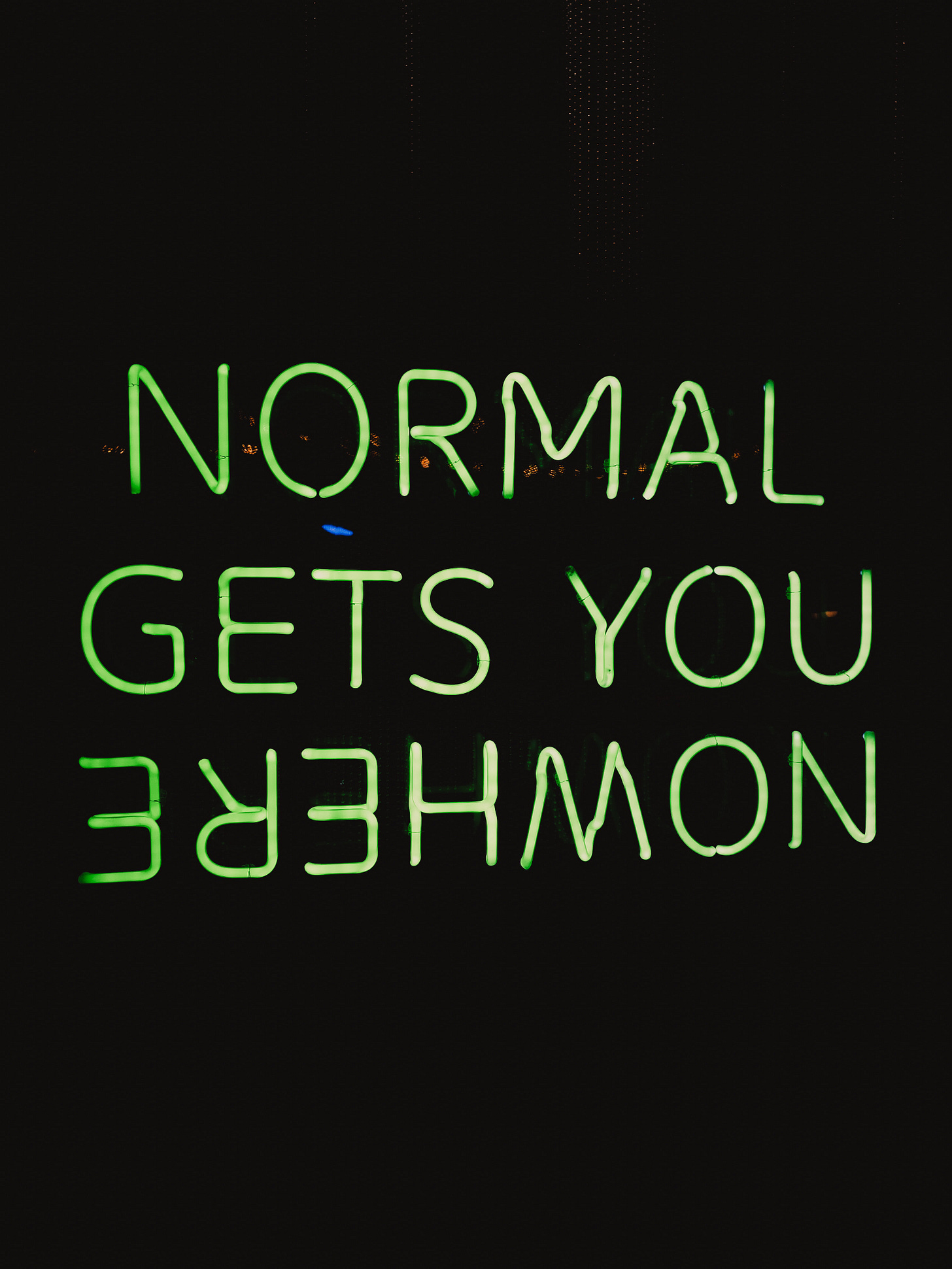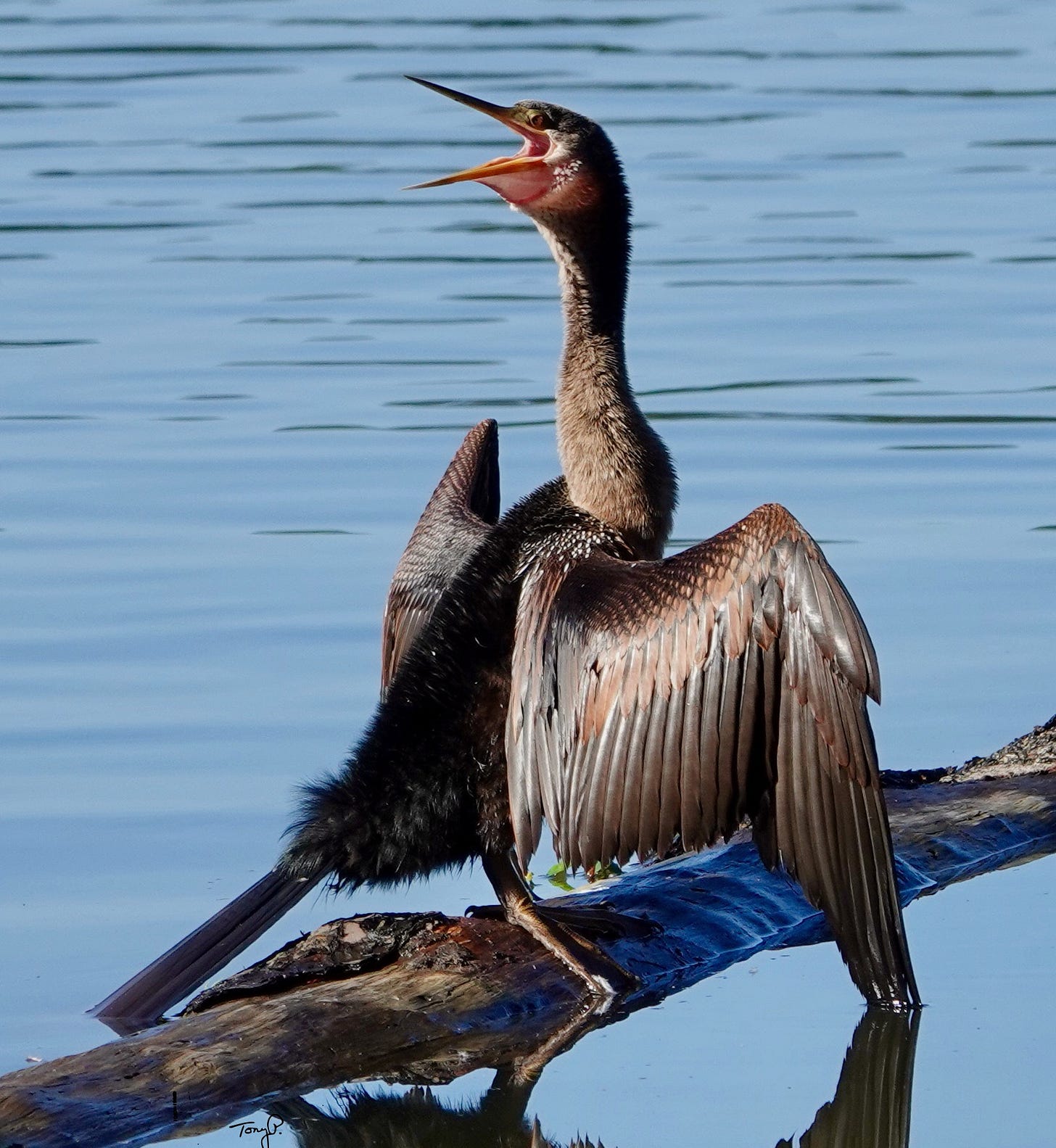This Isn't Normal!
Our inability to grasp the enormity of the living world's decline is nothing short of pathological. Fortunately, there are remedies.
Normalize (definition): To allow something to be viewed as normal—such as the catastrophic decline of non-human life on Earth.

WE HUMANS along with our domestic animals now weigh 17 times more than all other mammals, according to a recent paper in the Proceedings of the National Academy of Sciences. That’s over 94% of the total flesh, bone, and skin of all mammalian life on Earth!

And get this: the stuff that humans produce now outweighs all trees, plankton, bacteria, fungi, animals, and other life on Earth.

Our sheer “bulk,” of course, doesn’t mean much if other life were thriving and there were plenty of living space for all. But this certainly is not the case. Here are the latest findings published in Biological Reviews:
“Animal populations and whole species are declining across the tree of life, making the Anthropocene defaunation crisis one of the most alarming syndromes of human impacts on environments globally.”
Based on data for over 71,000 species of mammals, birds, reptiles, amphibians, fishes, and insects, nearly half (48%) of the world’s animal populations are in decline.
Over a quarter of all animal species are considered “threatened” with extinction. Even among animals classified as “non-threatened,” a third are declining.
An earlier report of The 2022 Living Planet Index compared global population abundances of mammals, birds, fishes, reptiles, and amphibians in 1970 with those of today. It found an average 69% drop, based on about 32,000 populations.

What about plants and other non-animal life, upon which—by the way—all animals depend? As you might expect, there’s a lot less information about them than for animals. But available data appear equally grim.
The latest assessment indicates that 45% of known flowering plant species are at risk of extinction. As many as 75% of undescribed and comparatively rare vascular plants (about 100,000 of 450,000 total) are “likely” threatened with extinction.
Even less is known about millions of fungi species, with perhaps 90% of them yet to be described by science.
Kudos to the scientists who worked on the Biological Reviews paper. But to be honest, I was very disappointed by their failure to include policy recommendations for tackling the root causes of defaunation. An essential restructuring of the global economy to reduce human overexploitation of the natural world, for instance.
Unfortunately, the authors took the easy route and left the matter of survival up to the wild animal and plants themselves, and to further research and management.
“Whether species and their populations can survive the Anthropocene defaunation will depend on their intrinsic traits, their adaptive potential, and also the research and management we dedicate towards preventing their disappearance.”
Well, we better worry a lot more about managing our human selves—our activities and our.numbers. Research and natural resource “management” have failed to stop widespread decimation of animal and plant populations, so don’t expect them to prevent mass extinction.
“Based on the signals of the current biodiversity crisis, the time to recognise this phenomenon as occurring has already passed, and now is the pivotal time to protect the future integrity of biodiversity, and thereby the persistence of humanity.”
Oh, spare me such language! Can we please protect life for its intrinsic worth and not just for the sake of human persistence and the “future integrity of biodiversity” (whatever that means)? When we keep putting ourselves first, we’ll wind up last (that’s the paradox of human ecology).
Normalizing the destruction of the living world: How do people come to accept their crushing domination of other life as something that can be even remotely considered normal?
I can think of at least seven ways —
First, by believing that human-caused decimation of life is no big deal because mass extinctions have occurred naturally over the course of Earth’s history. This is odd because people pride themselves on their intelligence and capacity for moral judgement.
Second, by thinking that because humans have gained power to diminish non-human life as they please, they are entitled to use it. This belief rests on the amoral doctrine of might makes right.
Third, by being unfazed by widespread loss of life when it is not human life. Monotheistic religions that place humans on a pedestal well above other life have a powerful influence on how people think.
Fourth, by viewing the loss of wildlife and nature as an inevitable consequence of human progress, of providing food, housing, transportation, and opportunities for increased wealth, of ensuring a thriving economy through continuous growth.
Fifth, by assuming that nothing major can be done to stop defaunation and that the best we can do is conserve what’s possible through better wildlife science and management.
Sixth, by downplaying the scope of the damage; for example, by finding sufficiency in the fact that declines in many species of wildlife (48% globally) are offset by a similar number of species whose populations appear stable or increasing (49% and 3%, respectively).
Finally, by simply detaching from nature and the reality of its sharp decline, either by living in a perceived “normal” environment that’s physically devoid of nature, or one that is hardwired to electronic devices, homocentric media, anthropomorphized animals, and a plethora of other artificially generated creations.
What can we do to “de-normalize” the decline/extinction of non-human life?
Recognize the problem—People desensitized to the losses suffer from what we might call eco-catatonia, defined as a social disorder that disrupts one’s ability to comprehend the severity and significance of declining wildlife and nature. The disorder inhibits one’s capacity for awareness and empathy for the more-than-human world.
I’m afraid that unless we address this now global pathology, further mind-boggling news about the decline of life on Earth will have little effect on human behavior.
While there’s no single remedy for the drivers of “normalization” mentioned above, there are ways to lessen their influence on society and forge a much stronger cultural movement in defense of nature.
Prescriptions for treating eco-catatonia:
Get people out in nature—greatly expand opportunities to physically, perceptually, intellectually, aesthetically, spiritually, and emotionally experience and connect with the natural world.
Tell people the truth about what is happening to life on Earth—the greatest injustice of all time—and how we must stop normalizing it. “People” means everyone, including policy makers, religious leaders, news reporters, university administrators, teachers, health care workers, truck drivers, and so on.
Consistently and creatively use social and traditional media to explain what must be done to protect the living world (economic reform, sufficiency lifestyles, inclusive morality, restoration of natural ecosystems, reproductive responsibility, etc.). As advertisers and media experts well know, repetition of messaging is essential if you’re going to affect human behavior.
Promote nature-based meditation and mindfulness to enhance individual awareness, perception, and connectivity to wildlife and nature.
Challenge religious anthropocentrism by emphasizing spiritual traditions and perspectives that encompass all life.
Challenge secular anthropocentrism in research, academia, business, and politics with ecocentric thinking and science.
Get bird watchers, outdoor enthusiasts, animals advocates, naturalists, and conservationists (collectively a high percentage of people in many countries) to understand and rally against eco-catatonia.
Cherish the living world—and trust in our human capacity for change.
Conclusions
Our wayward civilization is suffering from eco-catatonia, a social disorder that disrupts a person’s ability to comprehend the severity and significance of declining non-human life. Those of us who understand this deadly ailment must gladly accept the moral responsibility to do everything possible to cure it.
***
Takeaways (in outline form)
Key findings from recent research
Humans and domestic animals currently weigh 17 times more than all other mammals.
Nearly half of the world’s vertebrate and insect species are declining.
Over a quarter of animal species are threatened with extinction.
Plant species threatened with extinction range from 45-75%, depending on group.
Attitudes and beliefs that normalize indifference to declining life
Extinctions have occurred in the past, what’s happening now is no big deal.
Humans have the power to dominate and exploit other life as they see fit.
God’s concern is squarely with people.
The loss of wildlife and nature is an understandable and inevitable consequence of human progress, and only so much can be done to limit it.
There is no ecological crisis because there’s wildlife that is doing okay.
Humans can now exist apart from the reality of nature and its decline.
Remedies
Greatly expand opportunities for people to appreciate and connect with the natural world.
Tell people about the “Greatest Injustice”—human destruction of life on Earth—and how we must stop normalizing it.
Consistently and creatively use social and traditional media to convey what lifestyle, economic, and institutional changes are needed to safeguard the living world and our own future.
Promote nature-based meditation and mindfulness to enhance awareness and connectivity to wildlife and nature.
Challenge anthropocentrism by emphasizing spiritual traditions and religious perspectives that encompass all life.
Challenge secular anthropocentrism in research, academia, business, and politics with ecocentric thinking and science.
Get bird watchers, outdoor enthusiasts, animals advocates, naturalists, conservationists, and others to understand and rally against eco-catatonia.
Cherish the living world—and trust in our human capacity for change.
Conclusions
Civilization is suffering from eco-catatonia, a social disorder that disrupts a person’s ability to comprehend the severity and significance of declining non-human life.
Those of us who understand this deadly ailment must gladly accept the moral responsibility to do everything possible to cure it.
PS - Here’s another useful article for your library: The Sixth Mass Extinction: fact, friction, our speculation? April 2022.





Loved your concluding paragraph, especially the concept of eco-catatonia.
Very good article! I think many people do recognize the problem—maybe not the full scope of it— and feel overwhelmed. We are each trapped in an extractive, exploitative system. Each individual can feel somewhat powerless to make large systematic changes even though we understand that’s what’s needed. I don’t eat meat or fish products, and have no pets or kids, and that’s what many others are also doing. We should get rewarded for this in some way, meaning government could be incentivizing behavior that’s good for the environment. I think the ultimate solution is to get rid of $$ as an unfair and inaccurate system of value, and move to another value system to make assessments (such as the virtues). Yes, there’s pathology but also ignorance. (By the way, nihilism and atheism are on the rise and are not necessarily good for the environment—these nontheistic beliefs could underlie a “get it while you can” mentality.) Keep spreading the word and thanks for this message!!